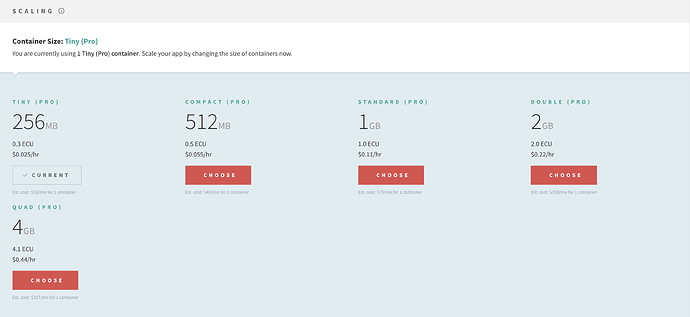Hi, we don’t have a maximum cap, we have clients running much more than 7000 connections. That is our fault that we don’t have a scaling guide and also study cases, we are working on this.
If you can handle 300 connections with 512MB without using redis-oplog be sure that you will be able to handle much more with redis-oplog.
Redis-oplog is the best way to use Subscriptions and achieve horizontal linear scale with Meteor as it helps you to spread the load of receiving/processing your real-time update messages equally or at least better. MongoDB oplog will require every container to read all the messages and that is why @diaconutheodor and his team came up with this great package, to workaround this issue and allow the messages to be sent to the necessary containers only.
You can improve this even further using redis namespaces then you can fine tune your messages. With this setup you can scale Meteor subscriptions a lot, I don’t see limits here.
A few important concepts about scaling Meteor apps and Meteor apps in general.
BTW, I’ve being scaling Meteor apps for many years, before I even join Tiny, so I’m writing below as a Meteor user that saw these solutions working in real apps.
1 - Meteor in runtime is just a group of packages running on Node.js, Meteor is not a runtime so Meteor has no limits to scale or at least it does not have any limit different than Node.js
2 - Subscriptions using DDP messages is a feature of Meteor to delivery real-time experiencie using subscriptions with almost no code in a very productive way but you can delivery data in many different ways (Methods, REST, GraphQL, etc), this is your choice in the end. When you choose to use Subscriptions you are going to receive a lot for free and in a very optimized way, think about the network layer, you only send diffs to the client and you didn’t write any code for this to work but of course some process need to calculate this diffs for you, keep the last state in the server, etc.
3 - Meteor subscriptions with MongoDB oplog will not scale horizontally (adding more containers, btw, Galaxy can do this automatically for you using triggers) at the same ratio of connections by container if you increase a lot the quantity of writes or containers, as every container needs to read all the oplog from MongoDB what will cause a side effect on MongoDB performance, because of that Redis oplog exists.
Important: most of the apps will never need to migrate to redis-oplog, because MongoDB oplog will be enough for most apps  The advice here is: only start to use redis-oplog when you need, the replacement process is a breeze (thanks @diaconutheodor). Also, if you only use Subscriptions for a part of your app this is probably never going to be an issue for you. Some apps are doing everything using subscriptions then the chances are higher to need a solution like redis-oplog.
The advice here is: only start to use redis-oplog when you need, the replacement process is a breeze (thanks @diaconutheodor). Also, if you only use Subscriptions for a part of your app this is probably never going to be an issue for you. Some apps are doing everything using subscriptions then the chances are higher to need a solution like redis-oplog.
4 - Redis oplog can bring horizontal scaling for Meteor apps the same ratio of connections per container using how many containers you want as with because it is just going to send the messages to the containers “watching” a specific query. You can fine tune the messages that will be delivered for each container. Important: most of the apps, even if they need redis-oplog they are not going to need fine tuning but if you are using redis-oplog and want to scale even further you should use namespaces.
5 - MongoDB can be the bottleneck in many cases and not Meteor as you will be reading and writing from MongoDB and then if MongoDB starts to run slower this will affect your app.
“Meteor does not scale” is a myth, it is the same as say “Java does not scale” or “Node.js does not scale”, any technology will depend on our implementation more than anything else and Meteor already provide by default a very good solution that will work for almost every app. After that we have amazing packages like redis-oplog, pub-sub-lite to help. Pub-sub-lite is a new package but I’ve already worked in apps that wrote similar solutions, it’s great to see this solution available as a package.
We (as a community) and also I (as Meteor evangelist) need to do a better job promoting Meteor and showing how well it can scale and keeping great features like subscriptions. All other subscriptions technologies if they would do everything that Meteor does I bet that they will performance much less than Meteor.
Disclaimer: nowadays you can use Meteor in many different ways, many different data layers, many different view layers and everything we are discussing here is how to scale Subscriptions with Meteor. If you don’t need or don’t want to have real-time data sync between Mongo and Mini Mongo that is not even something that you need to worry about.
